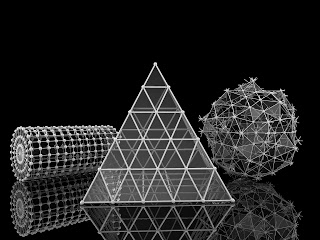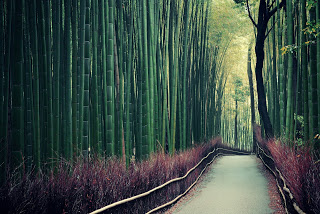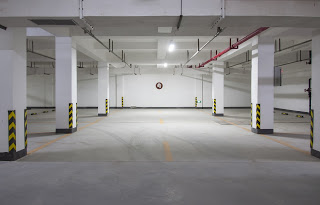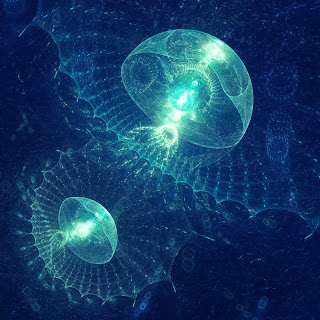Digital design
This Week In Design & Brand Strategy: 11/2/15 - 11/6/15

If you live in NYC or familiar with the area at all, you know full well how ridiculous and hard rent and finding an affordable place is. And just when you thought it couldn't be worse anywhere else? This week Fast Company wrote a piece that singles out Bangkok for being so expensive, that architects created 'a tiny house that can easily pop up in a parking garage'' You definitely heard correctly, by the way. The article, which discusses this portable home, states that the rent in Bangkok has gotten so expensive that people are living in parking lots and parking garages. According to the designers of the collapsible home, ''It is very difficult for young professionals to live with a bit of quality of life in the city'we noticed the issue and want to offer an alternative way of semi temporary living.'" Due to the climate in Bangkok being mild, these 'pop-up' apartments are open and quite airy. Rather than solid walls, the structure is composed of a lattice-like design that allows a breeze to pass through. Named after its actual physical properties, 'The Light House' is on display in the Chicago Architecture Biennial.
 Museums are great for rainy days right? However, what about visiting a museum on a rainy day without having to even go outside? According to an article on Fast Company this week, The Guggenheim has just launched its first online exhibit. Troy Therrian, who is the curator of architecture and digital initiatives at the museum, believes that museums should be rethinking the architecture and the way the exhibitions are designed. ''A lot of museums have gone the way of introducing more gadgets and gizmos into their exhibitions so that people can experience [the technology] firsthand, but that doesn't give you a sense of the effect of those things," says Therrien. 'It's too direct, and it's not interpretive enough. The idea for the ??zone Futures Market was to create something that would itself display the dynamics of the way that technology is controlling parts of our lives.'' In this way, the digital exhibit, called '??zone Futures Market', isn't solely about technology; the exhibit IS the technology. Another important difference between the physical exhibit and ??zone is that ??zone does not have an end date. I think this is a completely unique and innovative idea for museums to perhaps model after.
Museums are great for rainy days right? However, what about visiting a museum on a rainy day without having to even go outside? According to an article on Fast Company this week, The Guggenheim has just launched its first online exhibit. Troy Therrian, who is the curator of architecture and digital initiatives at the museum, believes that museums should be rethinking the architecture and the way the exhibitions are designed. ''A lot of museums have gone the way of introducing more gadgets and gizmos into their exhibitions so that people can experience [the technology] firsthand, but that doesn't give you a sense of the effect of those things," says Therrien. 'It's too direct, and it's not interpretive enough. The idea for the ??zone Futures Market was to create something that would itself display the dynamics of the way that technology is controlling parts of our lives.'' In this way, the digital exhibit, called '??zone Futures Market', isn't solely about technology; the exhibit IS the technology. Another important difference between the physical exhibit and ??zone is that ??zone does not have an end date. I think this is a completely unique and innovative idea for museums to perhaps model after.
A very fascinating article by Fast Company this week, discusses the work of Alexander Semenov, a marine biologist who dedicates his life and career to educating people on what organisms lie in the deep sea. His work, done through art and photography, is stunning and captures the organisms in such a way, that the reader is pulled into everything within the photo. According to Semenov, ''My own goal is to study underwater life through camera lenses and to boost people's interest in marine biology.'" Just looking at the one photo posted with the article, I am drawn in and can't help but study the photograph and weigh in on all the intricacies of the organism. The article also states that Semenov is going to be leading a three-year-long oceanic research trip called the 'Aquatilis Expedition.' The purpose of this expedition is to study the rare and extremely fragile soft bodied organisms that reside 300 feet under water. 'He's photographed a handful of these creatures, but estimates that 80 percent of them are undiscovered. The arresting images show jellyfish that look like delicate flora, iridescent Syllidae, and UFO-like Estonian indicans.' I highly recommend scrolling through the slideshow of pictures he's put out, as they are unlike anything you've ever seen.
 We've all seen the news articles and hear about it in passing, 'China's pollution problem is horrid, did you see the photos'? However, this week Fast Company wrote a piece discussing an up and coming architecture firm that plans to change this. The idea is to essentially build cities from bamboo and surround them with pollution-sucking bamboo forests. According to Chris Precht, one of the co-founders of Penda, ''Bamboo is underrated material, especially when it can be used locally.'' The article states that bamboo in a building, is two to three times stronger than a steel beam of similar weight. 'The designers also envision that it could be used to create entire cities in China, using a paired system of planting bamboo groves next to buildings. For each cane of bamboo chopped down for buildings, more could be planted in the forest, providing fresh air and a constant supply of new building material for the city.' When looking at the pictures and framework for these buildings I am blown away with how feasible and modern it all looks. If this design were to actually work in a city setting, it would be a huge stride for china decreasing the pollution problem they have currently.
We've all seen the news articles and hear about it in passing, 'China's pollution problem is horrid, did you see the photos'? However, this week Fast Company wrote a piece discussing an up and coming architecture firm that plans to change this. The idea is to essentially build cities from bamboo and surround them with pollution-sucking bamboo forests. According to Chris Precht, one of the co-founders of Penda, ''Bamboo is underrated material, especially when it can be used locally.'' The article states that bamboo in a building, is two to three times stronger than a steel beam of similar weight. 'The designers also envision that it could be used to create entire cities in China, using a paired system of planting bamboo groves next to buildings. For each cane of bamboo chopped down for buildings, more could be planted in the forest, providing fresh air and a constant supply of new building material for the city.' When looking at the pictures and framework for these buildings I am blown away with how feasible and modern it all looks. If this design were to actually work in a city setting, it would be a huge stride for china decreasing the pollution problem they have currently.Nichole Dicharry, is a Digital Marketing Assistant at IIR USA, Marketing and Finance Divisions, who works on various aspects of the industry including social media, marketing analysis and media. She can be reached at Ndicharry@iirusa.com

